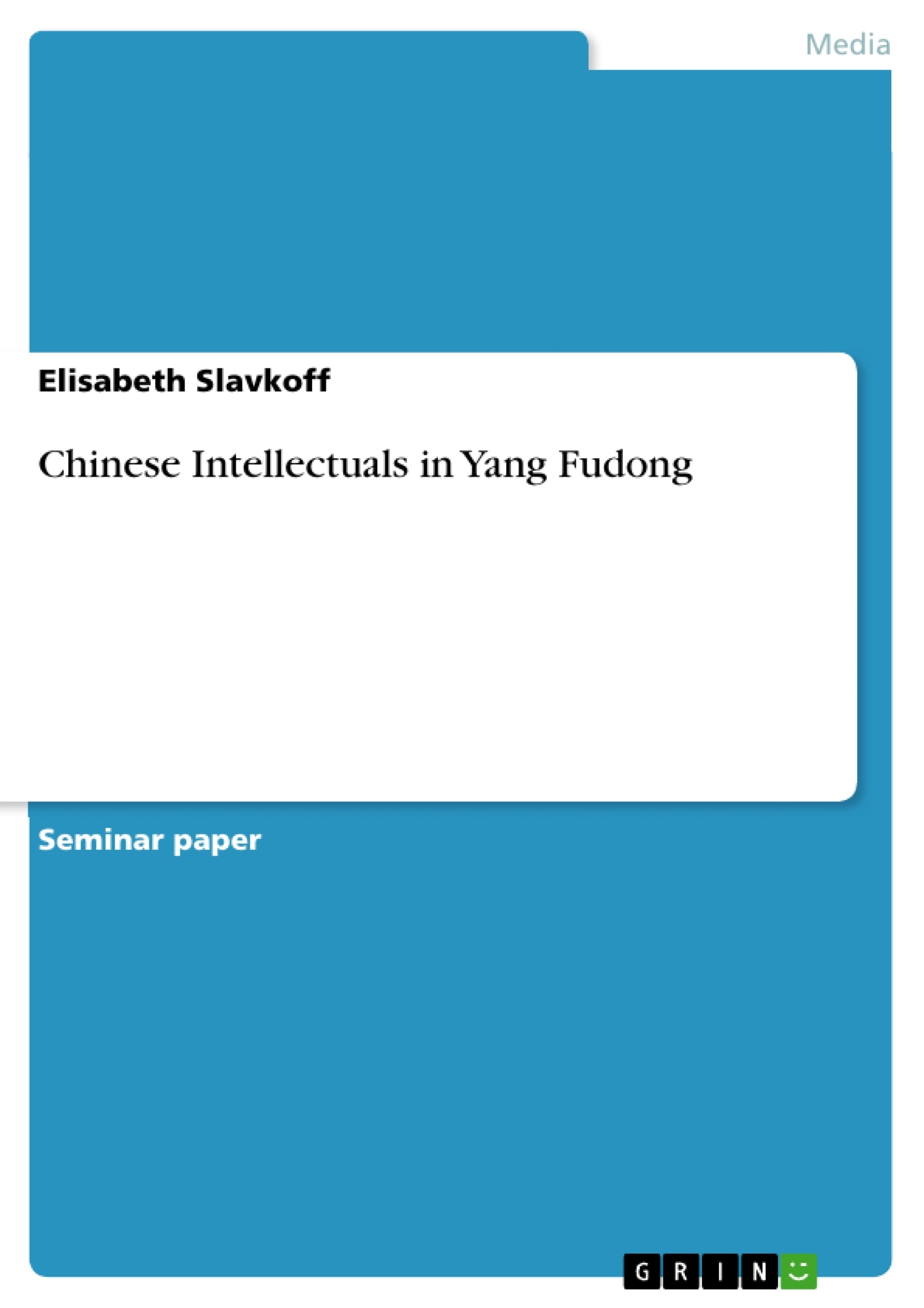Yang Fudong’s work deals with the situation of intellectuals in China.If
intellectuals have become marginalized, they nevertheless negotiate an autonomous space. In the field of the arts, non -institutional events and the Internet will most likely play a leading role. It remains to be seen whether the process of opening up of critical public spaces becomes irreversible in the Chinese political context.
Inhaltsverzeichnis (Table of Contents)
- Chinese Intellectuals in Yang Fudong’s Work – a Western View
- The Artist
- Audience and Appropriation
- Institutional Aspects: The Cultural Field and the Zhejiang Academy of Fine Arts
- The Situation of Young Intellectuals
Zielsetzung und Themenschwerpunkte (Objectives and Key Themes)
This text aims to provide a Western perspective on the work of Chinese artist Yang Fudong, focusing on the depiction of intellectuals in contemporary China. It analyzes the artist's work, his audience, and the institutional context within which he operates.
- The role and situation of intellectuals in contemporary China
- The impact of historical events and cultural discourse on art production
- The interplay of Western and Chinese cultural influences
- The role of galleries and art markets in shaping artistic expression
- The complexities of interpreting contemporary Chinese art from a Western perspective
Zusammenfassung der Kapitel (Chapter Summaries)
- The text opens with a captivating description of Yang Fudong’s films and video installations, highlighting their themes of love, loss, and cultural identity. It then introduces the artist’s background and the international recognition he has achieved.
- The text examines the artist’s target audience, exploring the differences in perception and interpretation between Western and Chinese viewers. It emphasizes the importance of understanding the cultural context within which the art is created and consumed.
- The text delves into the historical development of the Zhejiang Academy of Fine Arts, highlighting the impact of political shifts on artistic expression and the institution's role in shaping contemporary Chinese art.
- This chapter focuses on the portrayal of young intellectuals in Yang Fudong’s work, examining the Mandarin terms used to describe them and exploring the complexities of their social position within contemporary China.
Schlüsselwörter (Keywords)
This text focuses on the work of Yang Fudong, exploring the themes of Chinese intellectuals, contemporary art, cultural context, institutional influence, and the interplay between Western and Chinese perspectives.
- Quote paper
- Dr. Elisabeth Slavkoff (Author), 2005, Chinese Intellectuals in Yang Fudong, Munich, GRIN Verlag, https://www.grin.com/document/153488



